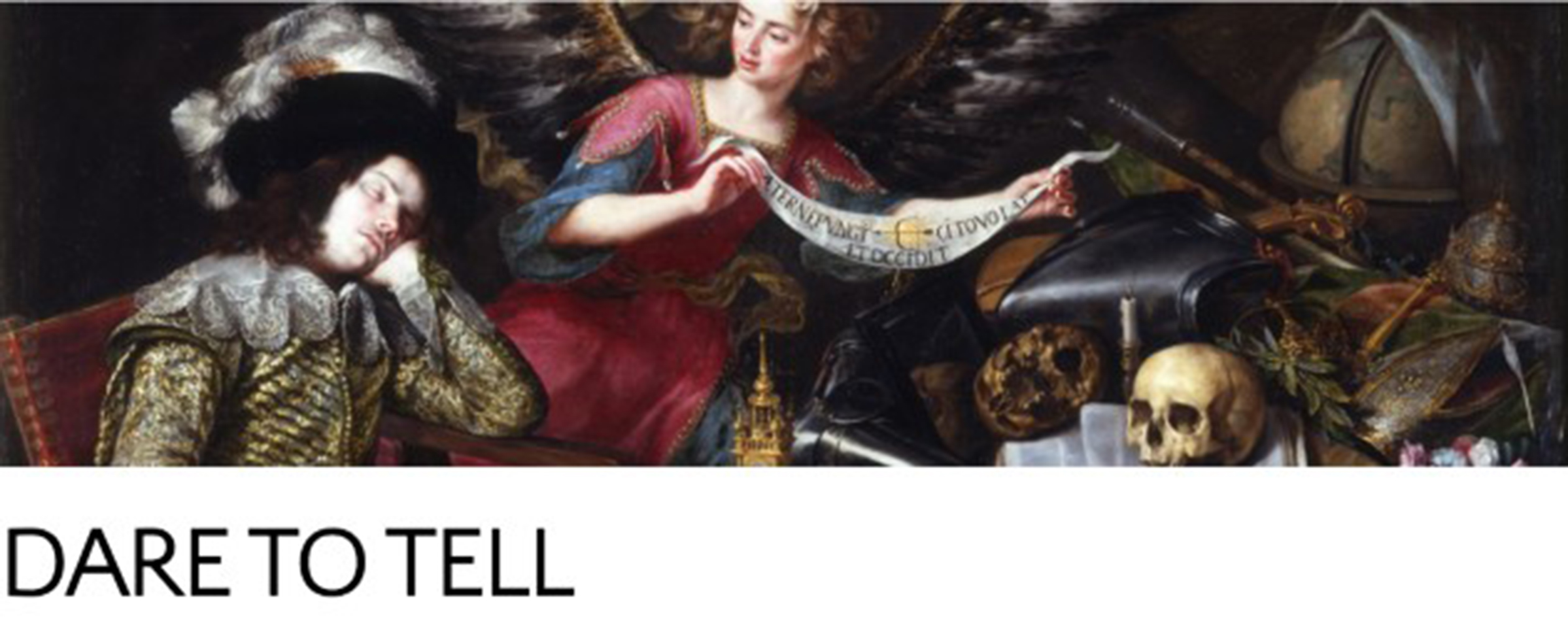‘Dare to Tell’: Silence and Saying in Ben Jonson 400th Anniversary Conference of Jonson’s first Folio of Works
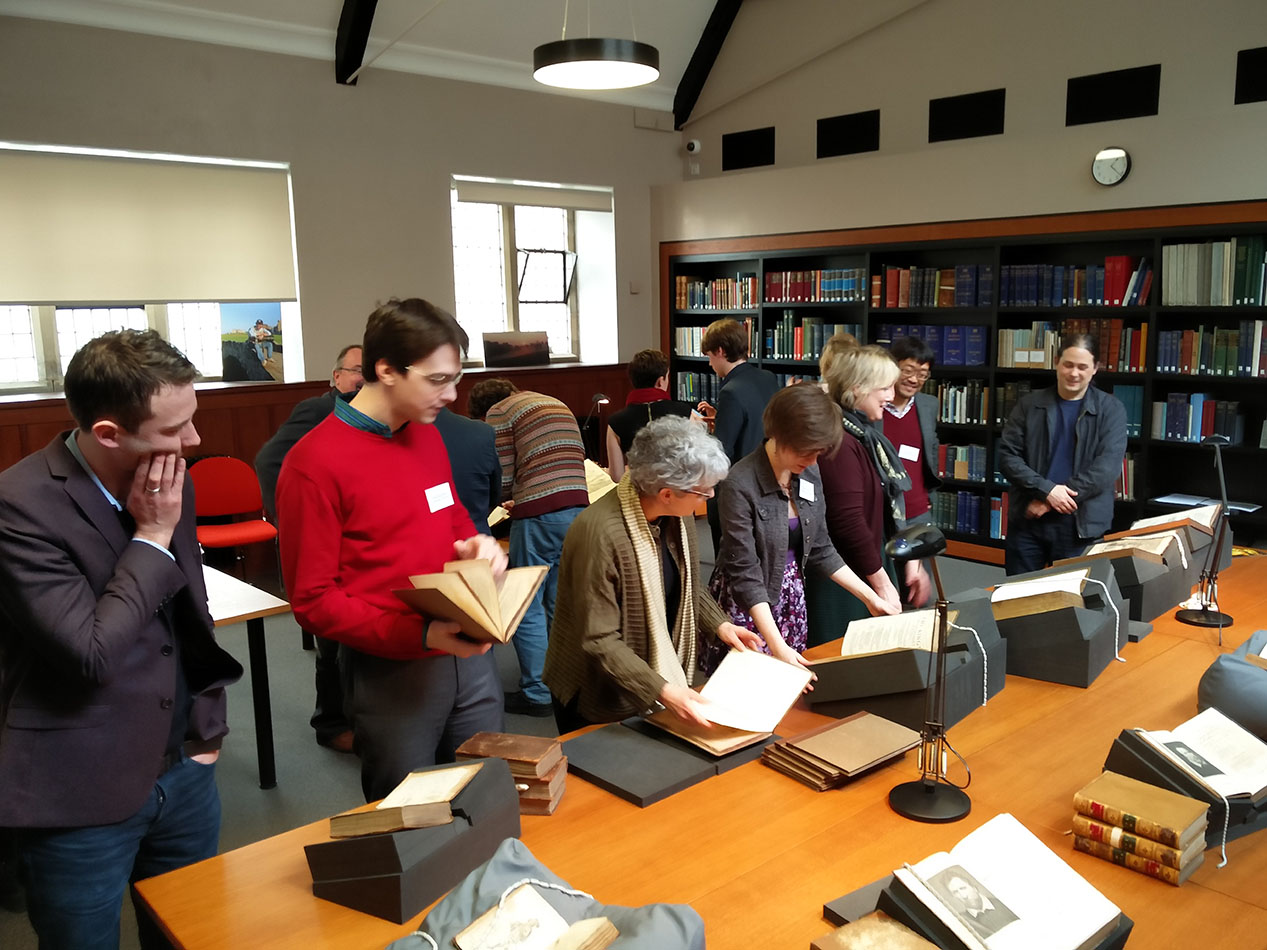
As part of the 3-day conference celebrating the 400th anniversary of the publication of Ben Jonson’s first Folio of Works, delegates from the conference ‘Dare to Tell’: Silence and Saying in Ben Jonson were welcomed to Special Collections for a presentation and viewing of St Andrews’ holdings of Jonson’s works and related rare books. Examining Jonson’s textual legacy was an integral part of the conference proceedings, and this was a great opportunity to engage with Jonson’s work and with concepts of editorial processes: from the first printing of his collected works, to reworking his texts in ‘the long 18th century’, to the groundbreaking modern critical collection (The Cambridge Edition of the Works of Ben Jonson, 2012).
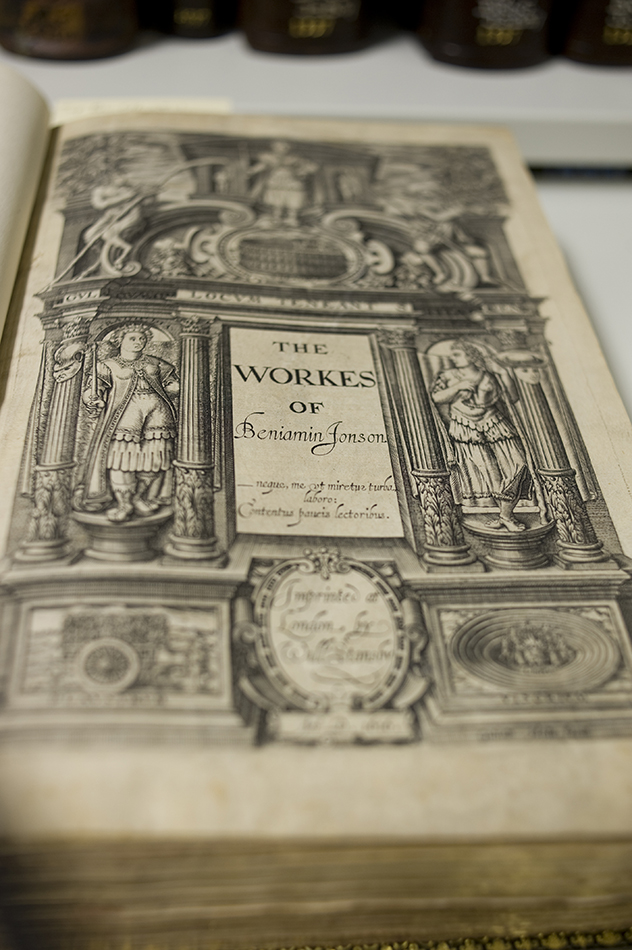
The main focus of this visit was the recently acquired edition first Folio of 1616 (William Stansby, printer and Richard Meighen, seller). This first edition was presented alongside the holdings of fragments of the rare project of the ‘second’ Folio of 1631 (with Bartholomew Fayre, The Staple of nevves, and The Diuell is an asse) and the Folio of 1640/1. Delegates were able to examine these texts side-by-side and these educational resources opened up debates and questions about collections in print. Invited Speaker Martin Butler (Leeds) was a general editor for the 2012 edition of Jonson’s works, and Lorna Hutson (St Andrews) edited The Discoveries (first printed in the 1640/1 Folio) for the same volume. It was an opportunity for eminent scholars in the field as well as early-career researchers and postgraduate students to discuss and handle these rare texts.
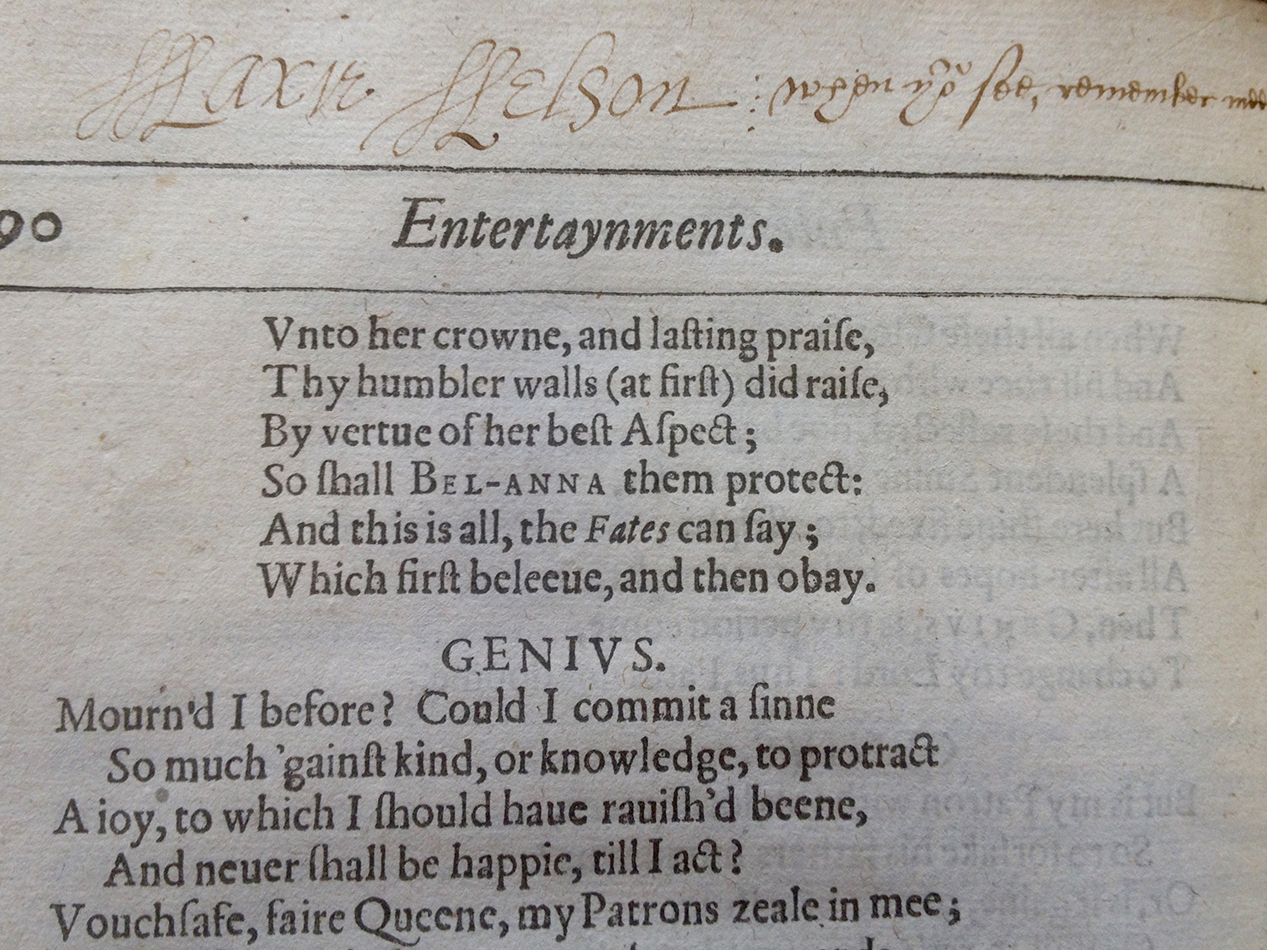
In addition, these early printings were set alongside the nine volumes of William Gifford’s 1816 edition and the Samuel Johnson Works of English Poets Vol.5, in order to focus on later editions of Jonson’s Works. This proved to be an opportunity for delegates to think of the transformations of Jonson’s work in print, his later reception, and the editorial processes that transformed his works.
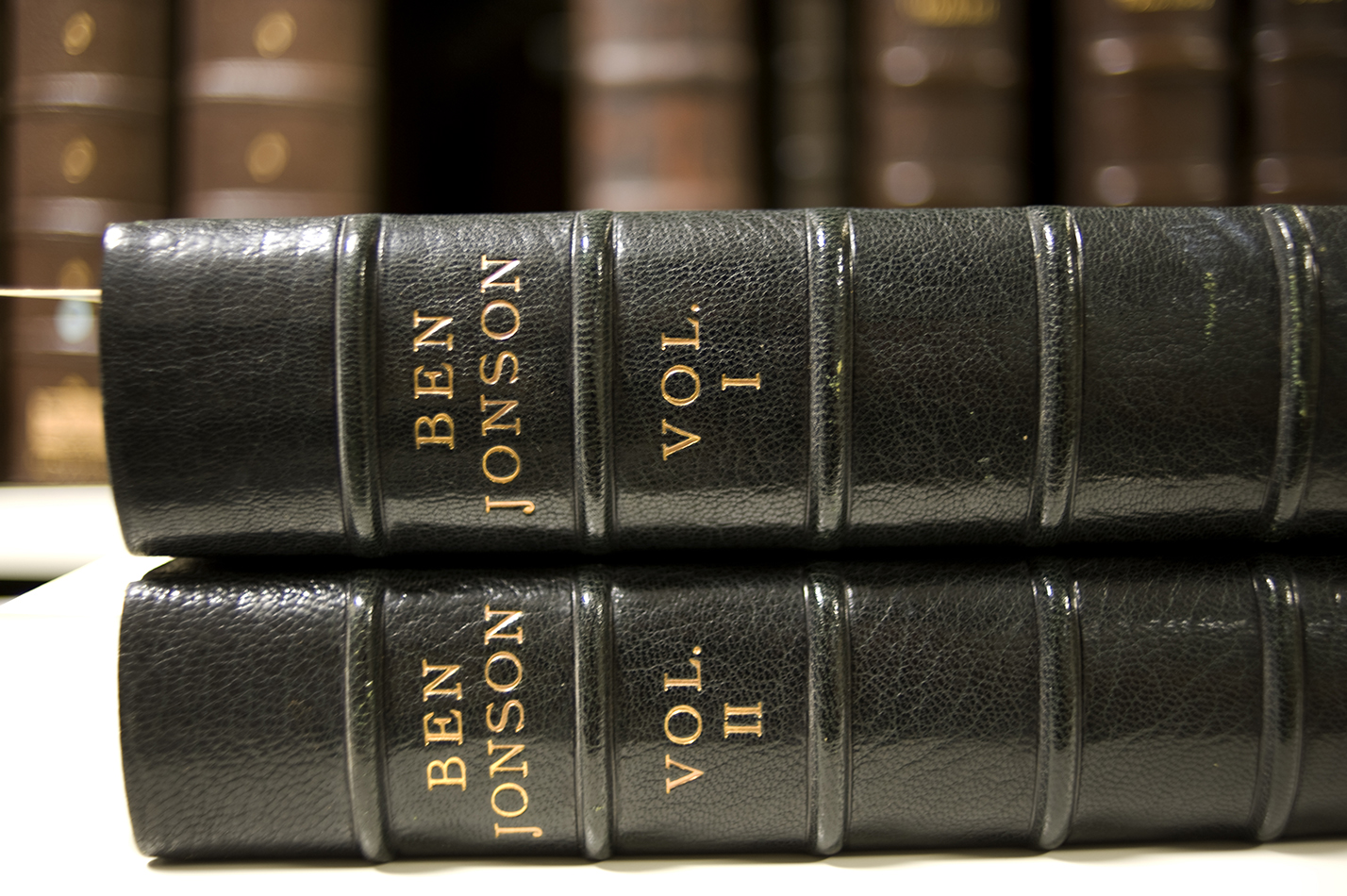
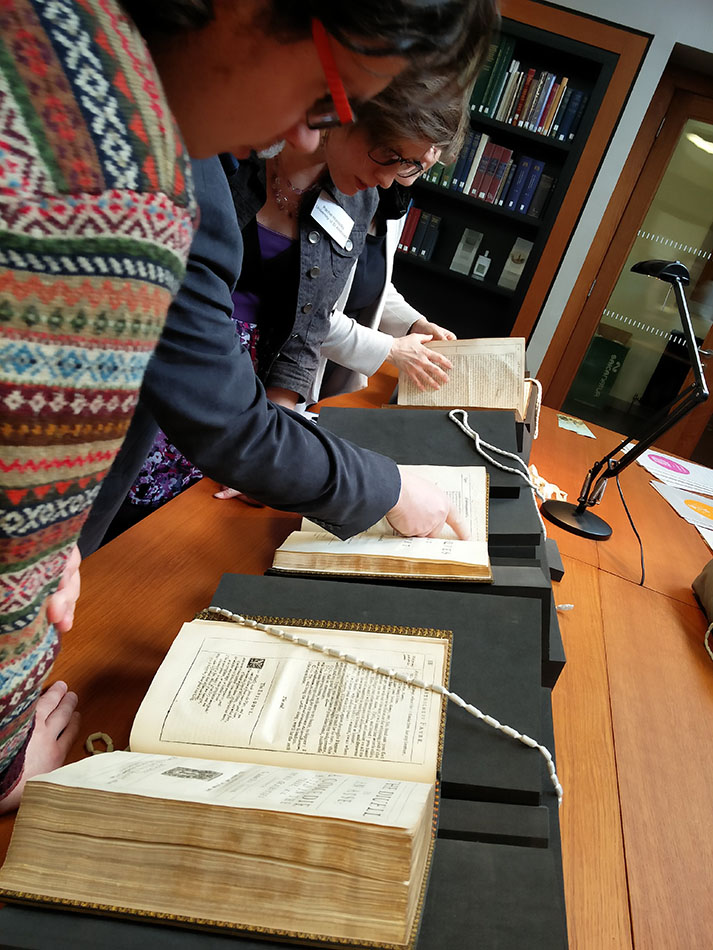 As an interdisciplinary conference, the research presented by delegates was often as varied as the rare texts on offer. Of particular importance was Jonson’s connections and travel to Scotland (Julie Sanders and Anna Groundwater, two invited speakers, worked with James Loxley to edit Jonson’s ‘Foot Voyage’ to Scotland) and Brean Hammond’s new play Ben and Jamie premiered at the Byre theatre as part of the conference. Presentations included research on the spaces and places of Jonson’s plays, Jonson’s masques, entertainments and city comedy, and of course, the legacy of Jonson as not only a writer but a figure for imaginative interpretation. The Special Collections visit focused on bringing together multi-faceted approaches to Jonsonian scholarship, showcasing the wide range of texts from the Folio editions to later printings, from the “Underneath this stone doth lie” epitaph (set to music!) to
As an interdisciplinary conference, the research presented by delegates was often as varied as the rare texts on offer. Of particular importance was Jonson’s connections and travel to Scotland (Julie Sanders and Anna Groundwater, two invited speakers, worked with James Loxley to edit Jonson’s ‘Foot Voyage’ to Scotland) and Brean Hammond’s new play Ben and Jamie premiered at the Byre theatre as part of the conference. Presentations included research on the spaces and places of Jonson’s plays, Jonson’s masques, entertainments and city comedy, and of course, the legacy of Jonson as not only a writer but a figure for imaginative interpretation. The Special Collections visit focused on bringing together multi-faceted approaches to Jonsonian scholarship, showcasing the wide range of texts from the Folio editions to later printings, from the “Underneath this stone doth lie” epitaph (set to music!) to 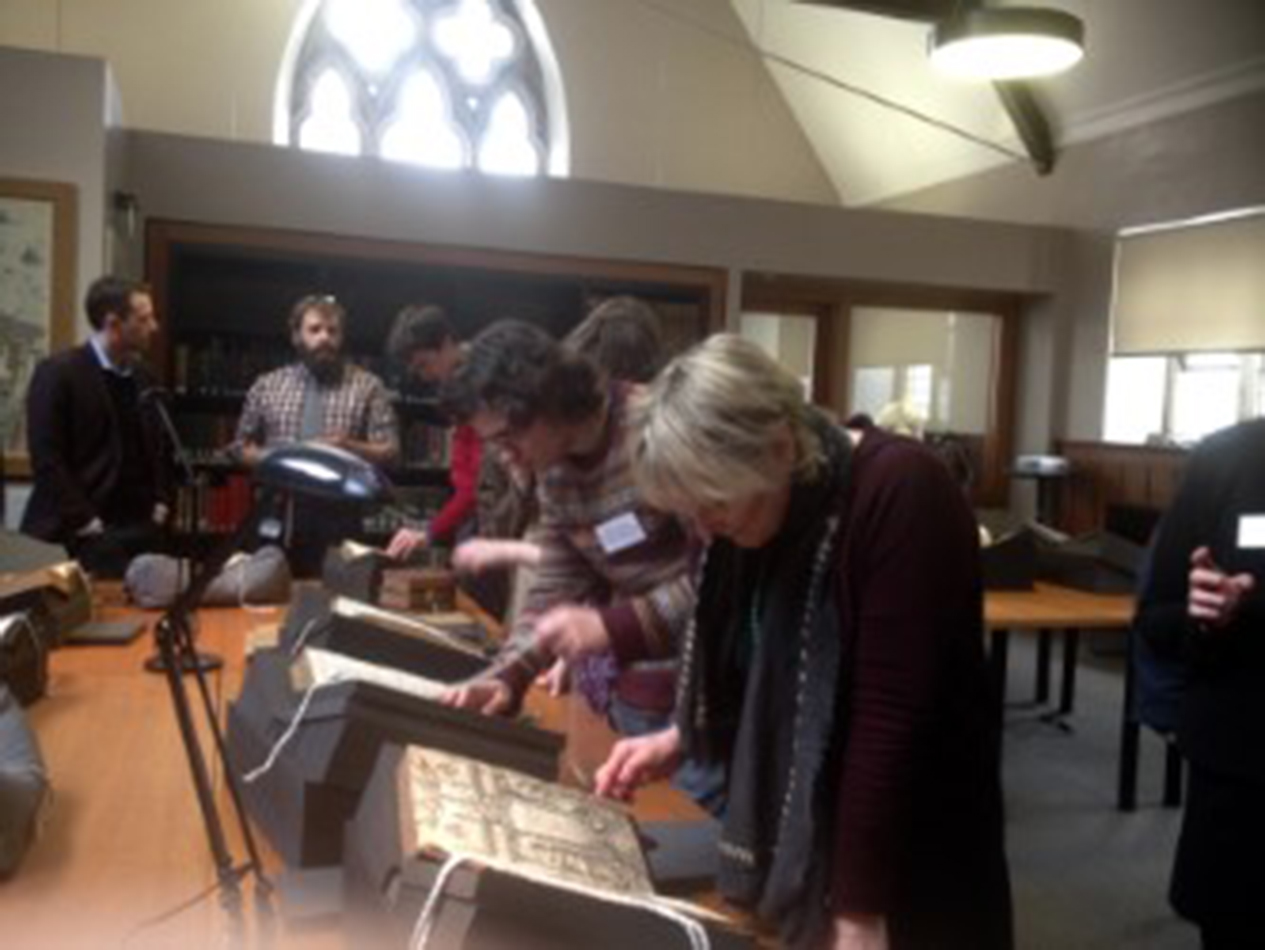 the Scottish landscapes of Theatrum Scotiae. The Alchemist (Bell 1777 printing) was also presented alongside selections from St Andrews’ “Alchemy Collection“, bringing together Jonson’s text with the rich holdings of the collection (invited speaker Isabel Karremann found this to be an exciting intersection of two elements of her own research). Overall, the resources available connected various types of research and fostered dynamic discussions for conference delegates.
the Scottish landscapes of Theatrum Scotiae. The Alchemist (Bell 1777 printing) was also presented alongside selections from St Andrews’ “Alchemy Collection“, bringing together Jonson’s text with the rich holdings of the collection (invited speaker Isabel Karremann found this to be an exciting intersection of two elements of her own research). Overall, the resources available connected various types of research and fostered dynamic discussions for conference delegates.
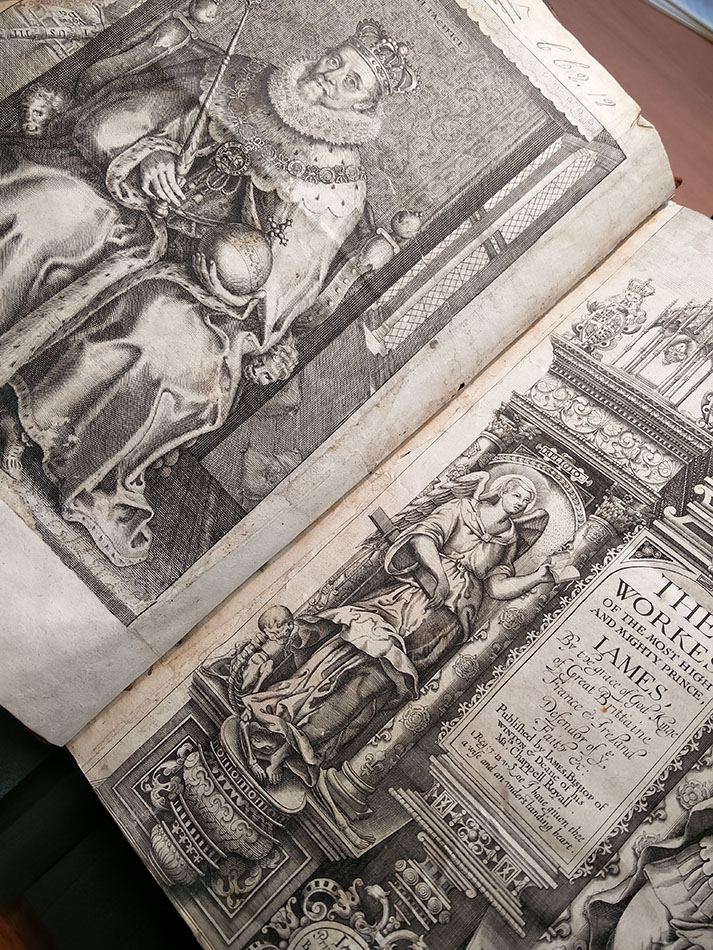
The trip to Special Collections allowed for critical discussion of this masterful writer and focused on his enduring significance. Ben Jonson’s rhetorical strategies and discursive practices, beyond his neo-classical intellectualism, and his reactive and daring responses to pervasive cultural ideologies of his time, make him stand out among his peers as a scathingly satirical, often subversive, self-conscious and prolific writer. The resources available in Special Collections allowed for delegates to interact with Jonson in print as they focused on his works as innovative, radical and, most importantly, enduring.
Julianne Mentzer
PhD candidate, School of English
